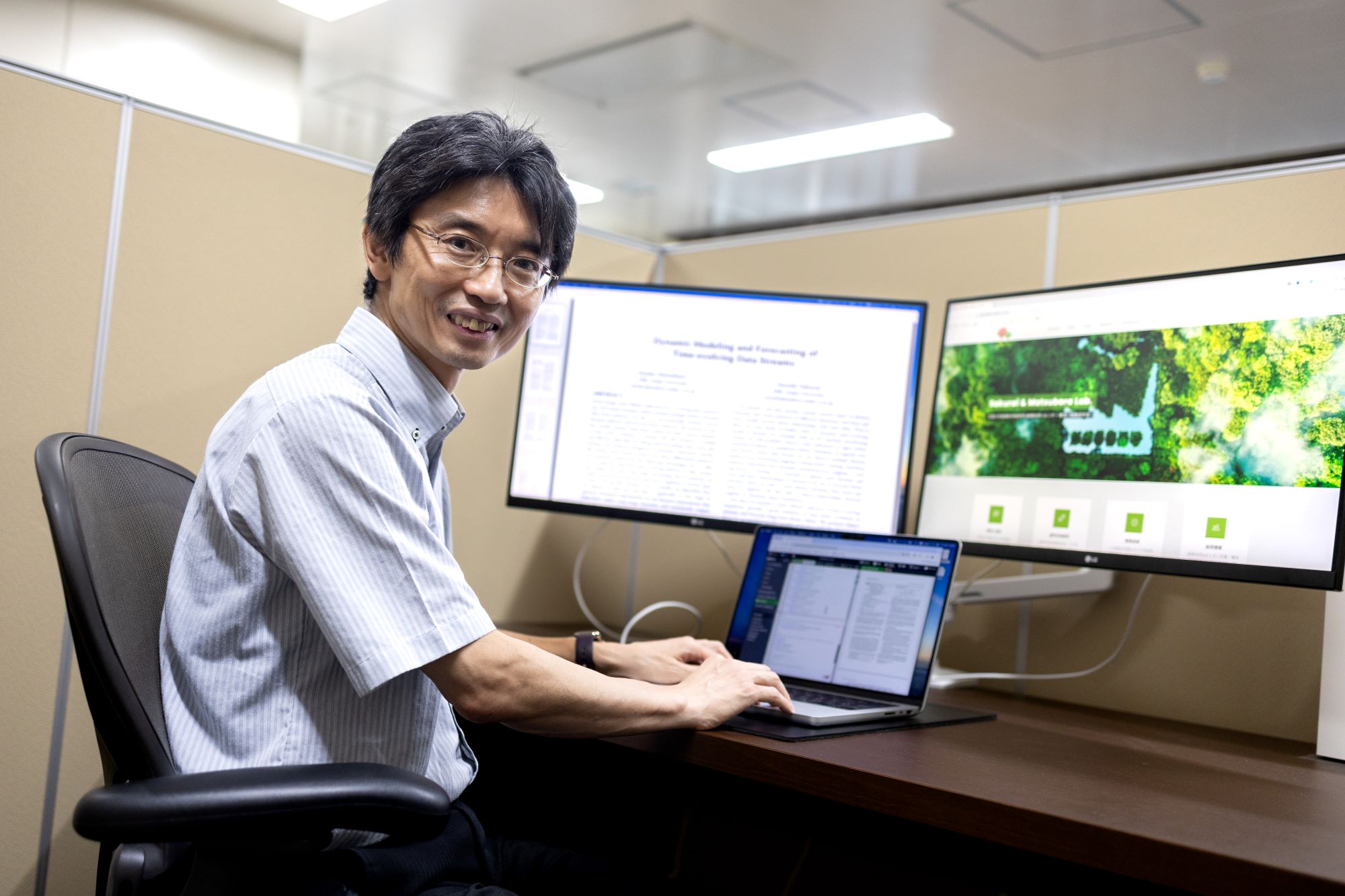
Professor Yasushi Sakurai, SANKEN
"Developing the world’s smallest, fastest, and most accurate artificial intelligence"
Dr. Yasushi Sakurai is renowned both in Japan and internationally for his work on dynamic machine learning and real-time analysis of data streams. His research focuses on developing flexible, fast, and accurate machine learning algorithms for general and special-purpose forecasting, which can be utilized to optimize social activities, improve the efficiency of smart factories, enhance the safety of AI-enhanced vehicles, and promote health inclusivity. In recognition of his achievements, Dr. Sakurai received the 2024 Commendations for Science and Technology from the Ministry of Education, Culture, Sports, Science, and Technology, which he shared with Dr. Yasuko Matsubara, an associate professor in his laboratory.1 Dr. Sakurai has earned numerous best paper awards at top international conferences and is the first and only Japanese national invited to deliver a 3-hour tutorial lecture at leading international conferences in time-series data mining (SIGMOD2015, WWW2016, KDD2017), highlighting the global recognition of his research.
Currently, the training of AI models, particularly deep learning algorithms, involves processing large amounts of data and performing complex computations, which are usually conducted using energy-consuming, high-performance servers equipped with powerful GPUs (Graphic Processing Units) and TPUs (Tensor Processing Units). In the field of real-time adaptive machine learning and forecasting, there is a growing need of a breakthrough from the current method to create a streamlined, fast, and accurate system that can be used on ‘edge’ computing devices, such as smartphones, tablets, or even Raspberry Pi-based mini computers. Dr. Sakurai has been the global leader in researching real-time nonlinear analysis methods for time-series big data, as well as autonomous edge machine learning mechanisms that support the development of this technology.

Fig. Overview of the model developed by Dr. Sakurai and his team and its possible uses
Dr. Sakurai and his team have developed a faster, more accurate, and more energy-efficient intuitive model. Their model is up to 670,000 times faster and 10 times more accurate (88% reduction in forecast error) than the latest deep learning-based forecasting methods, establishing the world's fastest and most accurate performance.2 Dr. Sakurai collaborates with companies and research laboratories worldwide to further develop and apply his research to various real-world applications. For instance, they perform real-time big data analysis to rapidly and automatically extract signature patterns that precede certain types of incidents, such as sudden braking or abnormal steering wheel operation in AI-enhanced vehicles or equipment failure in smart factories, and use them to forecast future incidents. The ability of Dr. Sakurai’s model to continuously learn and build a dynamic model network allows it to predict future patterns rapidly and accurately. The model has also found potential applications in web and social media trend forecasting, remote diagnosis and real-time monitoring of healthcare patients, and edge forecasting devices for use in remote areas.

As the director of the Artificial Intelligence Research Center, Dr. Sakurai plays an active role in developing internationally-minded human resources through collaborations with SANKEN’s international partners. He consistently supports junior researchers at the Center in conducting collaborative research at world-leading institutions. His dedication to research and mentoring the next generation of scientists and engineers undoubtedly advances the field of AI and evidence-based forecasting and inspires students and researchers to push the boundaries of data-driven technologies.
References:
1 https://www.mext.go.jp/content/20240409-mxt_sinkou02-000035075_1.pdf
2 https://www.dm.sanken.osaka-u.ac.jp/orbitmap/
Text: Clement Angkawidjaja/Edit: Christopher Bubb